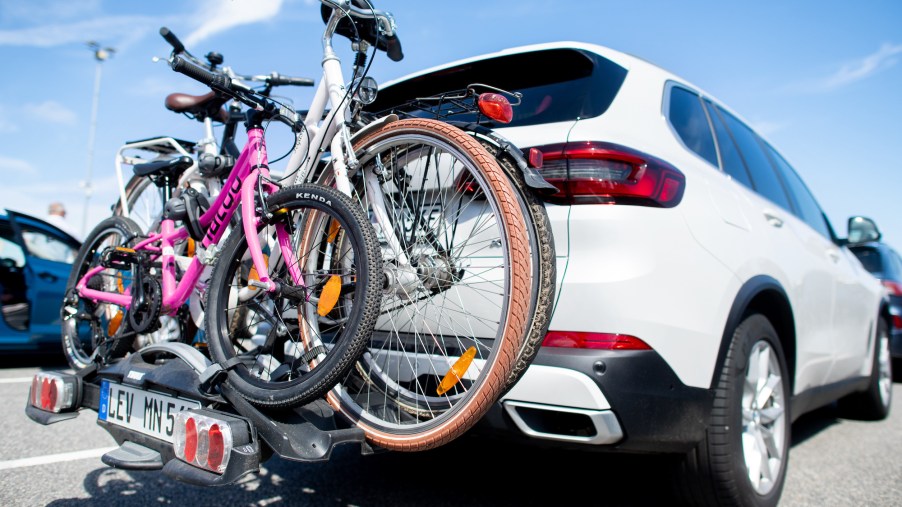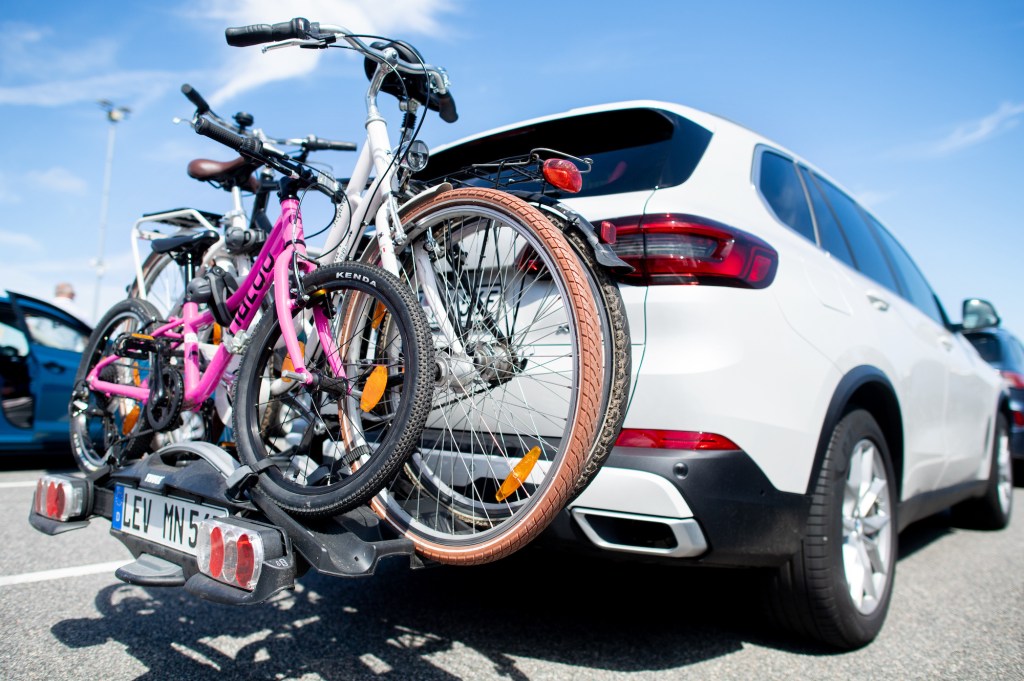
Are Rear Bike Racks Legal?
A bike rack is one of the best car accessories if you love cycling or even ride only occasionally. And using a rack is much better than trying to jam your bikes into the trunk or lashing them to the roof. There are two places you can mount bike racks: on the roof or the back of your vehicle. Roof bike racks might decrease your car’s fuel economy due to modified aerodynamics, but rear bike racks aren’t without problems too.
The 4 types of bike racks

According to Backroads, bike racks are categorized into four types based on how they’re mounted to a vehicle.
Roof-mounted
This rack style is by far the most versatile, but it’s also usually the most expensive. As long as you don’t mind lifting your bike(s) on top of your car, roof bike racks are great because not only can you use them for bikes, but you can also use them to haul skis or a small boat.
They are secure and don’t limit access to your trunk or other cargo space. But roof bike racks are not as easy to remove as other types and require heavy lifting.
Hitch-mounted
These racks are great if you frequently travel with your bike and/or have more than three bikes. Hitch-mounted bike racks are the second-most expensive type after roof racks. There are two styles: a hanging cradle, similar to a trunk-mounted rack, and a platform, where the bikes are secured to, you guessed it, a platform.
Hitch racks are sturdy and simple to install, and you can easily lock your bikes to the hitch. However, the big downside is that they add weight and length to your car. A fully loaded rack can add a few feet, not inches, to your car’s length.
Trunk-mounted
Usually the least expensive of the four, trunk-mounted bike racks are designed to rest on the back of your car’s trunk, with straps securing the rack in place. This kind is convenient because you can adjust the fit and use it on different cars.
However, there is usually a limit to how many bikes it will hold, usually no more than three, and because it’s mounted to your trunk, you can’t access your trunk without removing all the bikes and the rack. It’s also difficult to lock bikes to your car because of this rack’s design.
Spare tire–mounted
If you don’t have a trunk but a spare tire mounted to the rear of your vehicle, these models are an inexpensive option and are similar to the trunk-mounted variety. They’re easy to install but can hold only a maximum of two bikes. And like the hitch-mounted kind, they add a few feet to your car’s length.
Rear bike racks are usually legal, but there are caveats
According to Bike Appeal, there’s nothing inherently illegal about using a rear bike rack. But problems arise with improperly mounted units, which can pose a safety risk and obscure your car’s license plate and taillights.
Requirements vary by state, but a good rule of thumb is to ensure your vehicle’s license plate and taillights are visible. This might mean getting an auxiliary plate that’s lit so that it’s always visible.
Problems with rear bike racks on cars
The main problems you run into with rear bike racks, excluding the previously mentioned legal situations, are limited to no access to your trunk or other rear cargo space and added length to your car, which could cause problems when backing up or trying to maneuver into tight spaces. Of course, no rack is perfect. Roof racks add height to your vehicle, and you have to be mindful of low-clearance areas, such as parking garages.
Taking a bike out on a relaxing ride or an action-packed trail adventure can be fun. And though pickup trucks are a great way to transport bicycles, a bike rack will work equally well if you don’t have a truck. Just make sure your rack and bikes are secure, and if you have a rear bike rack, ensure your license plate and taillights are visible to other drivers. Happy biking!


